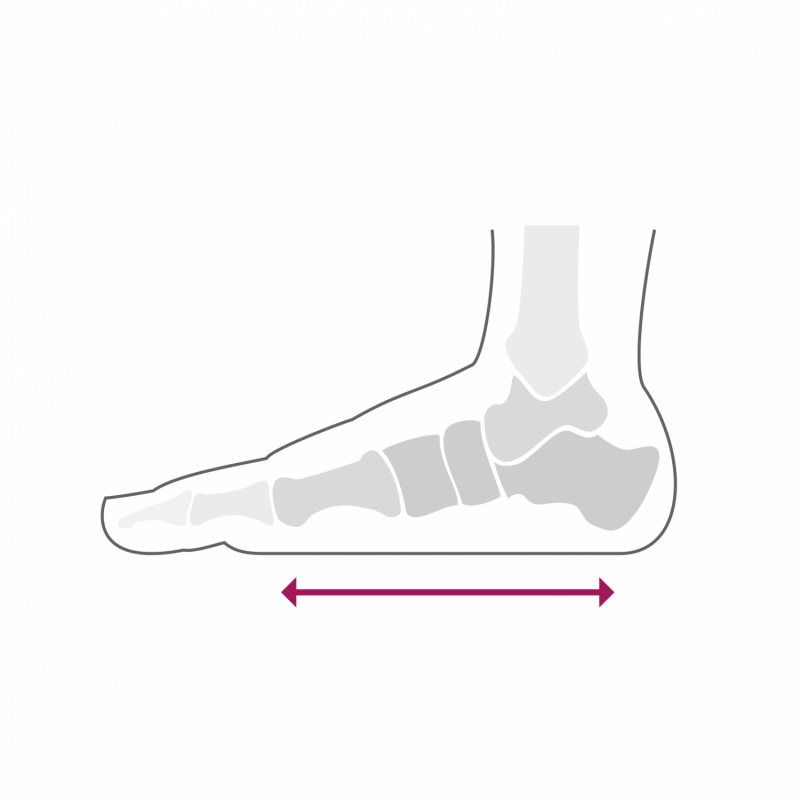Decompensated Flat Foot

The flat foot, like the hollow foot, is an anatomical variation of the so-called "normal" foot. The flat foot is characterized by a more or less marked sagging of the arch on the inner side of the foot. It is accompanied by a more or less significant rocking in the valgus of the hindfoot (hindfoot in "x") and an abduction of the midfoot (foot deviating outwards). The causes of flat feet are multiple. Besides a hereditary or genetic origin characterizing the morphology of this foot, a significant shortening of the gastrocnemius muscle (calf muscle forming the Achilles tendon and fitting above the knee) accentuates the tendency of the foot to sag. The flat foot is well compensated for a long time, but the forces exerted on the foot over the years cause an overload of certain ligament and tendon structures, which leads to decompensation of the foot and the appearance of pain. The first symptoms appear during prolonged exertion and are most often due to inflammation of the hamstring tendon, one of the essential tendons for keeping the foot in the correct position. If the deformity worsens, osteoarthritis can settle in the joints of the hindfoot and ankle, further accentuating the pain and functional discomfort.
The clinical examination confirms the diagnosis and radiological examinations (standard radiography, magnetic resonance imaging MRI) determine the involvement of certain anatomical structures.
Treatment
In the case of a flat foot, it is important to consult a specialist as soon as the first symptoms appear. At this stage, a conservative treatment can be implemented, most often in the form of suitable plantar supports and stretching exercises for the posterior leg muscles, in particular the gastrocnemius, as well as posterior leg muscle strengthening exercises. These measures then make it possible to stabilize the situation and avoid a progression of symptoms and deformation.
At a more advanced stage of the deformity, surgical correction is often necessary in order to restore the anatomy of the hindfoot. The intervention is a combination of several procedures (corrective osteotomy of the calcaneus, partial arthrodesis, lengthening of the gastrocnemius muscle, suturing or strengthening of the posterior hamstring tendon). In the presence of symptomatic arthritis of the hindfoot or ankle joints, arthrodesis, possibly combined with the fitting of a total ankle prosthesis, is often necessary and is used to treat symptoms.
The intervention can last up to two hours depending on the gestures to be performed and can be performed under general or spinal anesthesia. It can be combined with local anesthesia of one of the main nerves of the foot (popliteal block), which significantly reduces post-operative pain. It takes two to three nights of hospitalization. Walking is done immediately from the first post-operative day in full discharge of the foot operated using canes in a removable plastered boot. This total discharge must be observed during the first two weeks. The removal of stitches and the making of a new removable plastered boot take place 2 weeks after the intervention. From this moment, a partial load of 15 to 20 kg on the operated foot is allowed for 4 additional weeks. A clinical and radiological check-up is carried out 6 weeks after the operation.
In case of sufficient bone healing, a gradual increase in the load on the foot is done over a period of two to three weeks until the total load. From the 7th week, a physiotherapy treatment aimed at reducing the swelling of the foot and improving its function is implemented. Resumption of activities such as swimming, cycling or moderate walking is possible from the 10th post-operative week. More restrictive activities on the foot such as longer hikes can be considered from the 7th month after the intervention. Activities such as running or other stop and go sports are not recommended after this type of intervention. The foot will continue to refine and heal until one year post-operatively and gradually regain its full function. Wearing a suitable plantar support is recommended later to maintain the correction.
